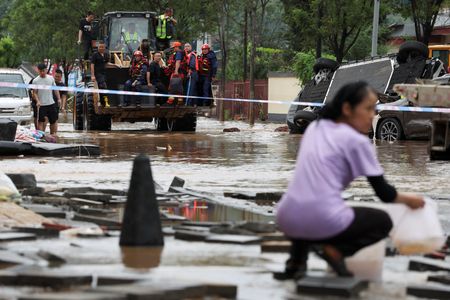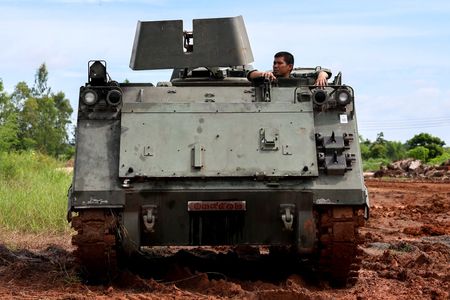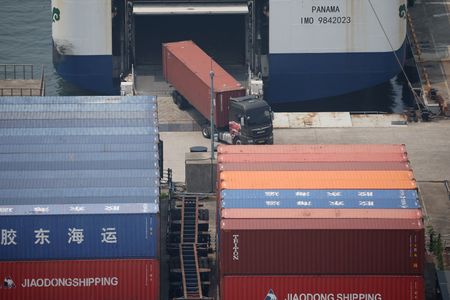By Xiuhao Chen and Liz Lee
BEIJING (Reuters) -Extreme weather killed at least 30 people in Beijing after a year’s worth of rain fell in a matter of days, stretching the Chinese capital’s disaster management capabilities and prompting some experts to call the city a rain trap.
Much of the rain inundated Beijing’s mountainous north near the Great Wall, with 28 deaths reported in the district of Miyun and two in Yanqing, the official Xinhua news agency said on Tuesday. It did not say when or how the deaths occurred.
Heavy rain started last Wednesday and intensified around Beijing and surrounding provinces on Monday, with the capital experiencing rainfall of up to 543.4 mm (21.4 inches) in its northern districts, Xinhua said. The average annual rainfall in Beijing is around 600 mm.
“The cumulative amount of precipitation has been extremely high – reaching 80–90% of the annual total in just a few days in some areas,” said Xuebin Zhang of the University of Victoria in Canada and CEO of the Pacific Climate Impacts Consortium (PCIC).
“Very few systems are designed to handle such an intense volume of rainfall over such a short period,” Zhang said.
The local topography – mountains to the west and north – “trapped” the moist air and forced it to rise, enhancing the extraordinary amount of precipitation, he said.
China’s usually arid north has seen record precipitation in recent years, with some scientists linking the rainfall to global warming.
In the summer of 2023, heavy rain and flooding killed at least 33 people in Beijing. Rainfall in the city of Xingtai in neighbouring Hebei province exceeded 1,000 mm in two days – double the yearly average.
Late on Monday, President Xi Jinping said there had been “heavy casualties and property losses” in Beijing and the provinces of Hebei, Jilin and Shandong, and ordered “all-out” search and rescue efforts.
More than 80,000 Beijing residents had been relocated, Xinhua reported, with roads and communication infrastructure damaged and power to 136 villages cut off overnight.
The most intense rain occurred on Saturday in Beijing’s hilly Huairou, which saw 95.3 mm of rain in one hour.
In Miyun on Monday, some people were trapped at an elderly care centre as water levels rose close to the roof. Emergency rescue services swam into the building and used ropes to pull out 48 people.
On Tuesday, parks, libraries and museums including the Palace Museum at the Forbidden City were closed. Train and bus services in the suburbs and along waterways were suspended. Hundreds of flights were cancelled or delayed at Beijing’s two airports, state media reported.
‘FLOOD STILL COMING’
Heavy rain also pounded the province of Hebei and the city of Tianjin neighbouring Beijing, which are all part of the vast Hai river basin.
Four people were killed in a landslide in Hebei on Monday, with eight still missing, as six months’ worth of rain fell over the weekend.
In two villages in Tianjin on Monday, major roads were flooded, bridges damaged, with only the roofs of single-storey houses visible, China Central Television (CCTV) reported.
Heavy rain is expected to persist in parts of Beijing, Hebei and Tianjin on Tuesday, the emergency management ministry said Monday night, adding that “the disaster relief situation is complex and severe.”
Some residents in the region posted on social media platform Weibo calling on authorities to expedite rescue efforts.
“The flood is still coming, and there is still no power or signal, and I still can’t get in touch with my family!” a post on Tuesday morning said.
(Reporting by Xiuhao Chen and Liz Lee in Beijing and Farah Master in Hong Kong; Editing by Stephen Coates and Saad Sayeed)












